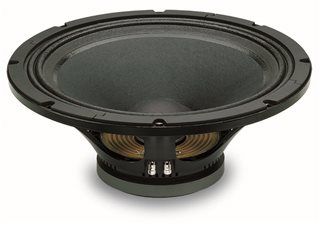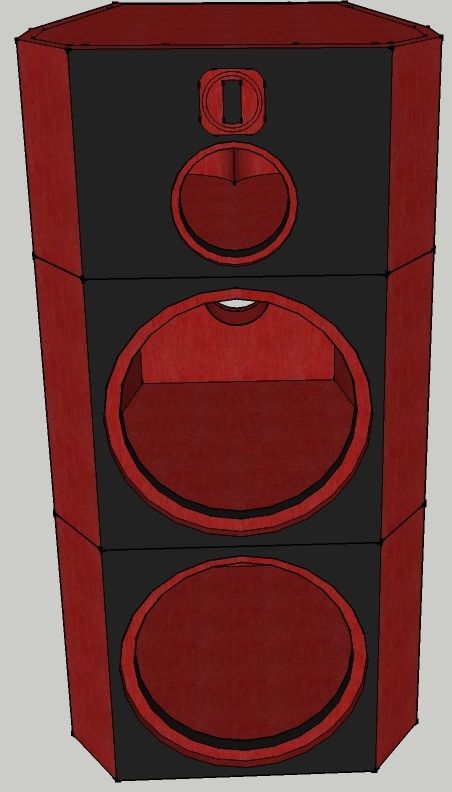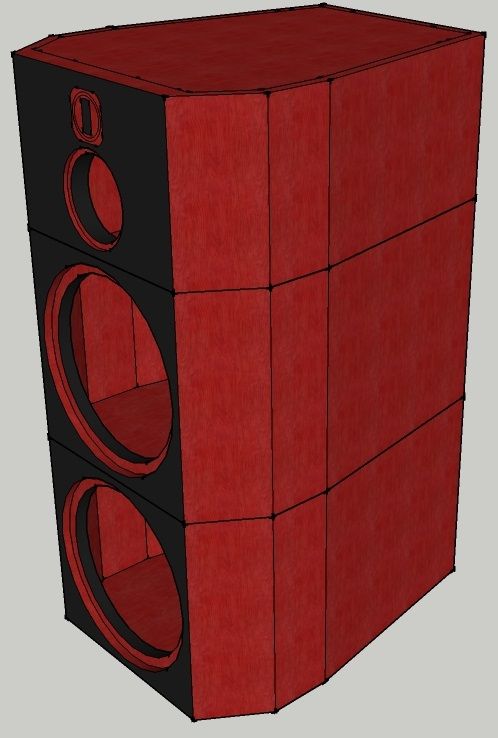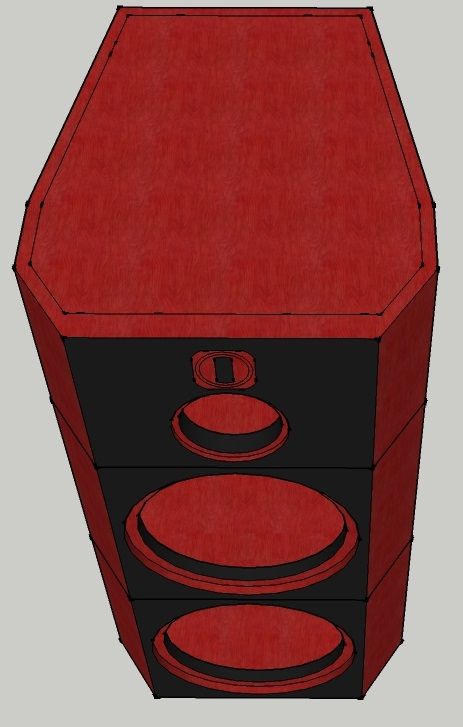With my amplifier building itch now scratched to a reasonable degree, I once more find myself pondering speaker builds. Not that I have time at the moment with fixing up the house, but planning ahead always pays off.
I have boxes and boxes full of all kinds of divers at home just waiting to be used. People who know me will testify that I have a driver fetish of drug addict proportions...
Anyway, in preparation for a massive subwoofer project I was planning to build I purchased 4x 18" HE drivers by a company called 18Sound (made in Italy). I have used the brand plenty and am a firm supporter of their products. The specific drivers are 18LW800 Extended Low Frequency Transducer. Doesn't that just sound good rolling off the tongue?

Lately however, I have been wondering whether or not I should use the 18" drivers to rather build a set of speakers. Don't get me wrong here - my current HE speakers are awesome, and I love them beyond any reasonable explanation, but the monkey is on my back...
So I did a couple of simulations, ran through all the numbers, and finally made a couple of drawings to see what something like this would potentially look like. This is my first attempt:



Because I am planning on using the 18" drivers, and they need some air volume behind them, the bass cabinets (according to my calculations) need to be in the order of 200 liters gross volume each. That volume requirement, combined with a driver diameter of 460mm make for Almighty HUGE cabinets. Each cabinet will be 700mm wide, and 850mm deep with a height of 500mm. Stack 2 of them on top of each other, and you are already at the 1m mark, and that's without having any kind of foot or plinth. If you add up the midrange and treble cabinet on top of that we are looking at nearly 1.4 meters tall.
As for the midrange, I have a pair of brand new 8" coaxial drivers by BMS.

They will go into their own cabinets on top of the bass stack. While the bass cabinets will naturally be bass reflex, using 150mm diameter ports, the midrange will sit inside my "patented" double folded reducing tapered quarterwave cabinet. Why? Because the midrange always sounds better in that kind of a cabinet.
Being a coaxial driver, the BMS has as far as I can remember either a BMS 4540 or a 4550 compression driver behind it. I will open the boxes this evening and check what exactly it has there. That then takes care of the treble.
Finally, just because I can, and I have the drivers available I will implement a super tweeter comprising of a Beyma CP21 finishing the top end off.

This then, will be a 4.5 way speaker of proportions and mass such as will never see it presented at a DIY audio festival, same as my current speakers. I have not worked the weight out, but it will surely be in the region of 180kg+ per stack (side). Because of the weight, the only way to allow me to move these things from the workshop into the listening room will be to build the cabinets individually and stack them in place.
Now if you look at the published sensitivity of the individual drivers there are some bits which look troublesome initially:
18Sound 18LW800 bass: 99.5dB
BMS 8c250 mid/bass: 93dB
BMS compression driver: 109dB
Beyma CP21: 105dB
You will notice that the midrange is much lower than the rest. Now if you were someone with less of an appetite for the seemingly difficult you may decide against using this driver, but me - I see newly unlocked possibilities!
My current thinking then is something like this: Super tweeter is responsible for the region around 8 - 20kHz. Compression driver between 2 or 3kHz all the way up to 8kHz. Midrange driver between 250 / 350Hz up to the tweeter handover. Bass driver directly below the midrange plays from F0 up to midrange handover. Bass driver below that will be used as a .5, but not in the sense of achieving baffle step compensation, but rather to provide boost to the lowest frequencies where the drivers are rolling off because of the low Q, so it will really lift the bottom end between 30 and 80Hz or thereabouts.
If you take all of that into consideration, then I have 99.5dB of bass - 3dB of baffle step = 96.5dB. Let's assume those figures are optimistic at low bass frequencies, so I will remove another 3dB from that figure which leaves me at a nice round 93.5dB. Because of the limited range the .5 bass driver will play, it will not add anything significant at the crossover frequency to the midrange, therefore I have achieved deeper bass and full baffle step compensation by aiming the low end sensitivity to match up with the midrange.
This is all theory at this point, but if I find the bass too loud as compared to the midrange there are a couple of other tricks I have up my sleeve to convert a couple of dB worth of extra efficiency to even deeper bass response in the crossover, so no worries on that front.
As for the compression driver, the figure of 109dB is nonsense. It may very well do that in its natural state, but as soon as we apply some filters to shape the output into something more usable and resembling a flat response that will more than likely be below the 100dB mark, and from there we just pad it down to match.
As far as I can tell the super tweeter does not require any kind of shaping filters, so that one will be a simple pad down to suitable levels.
In the end, I don't expect this set of speakers to compete with my current setup in terms of pure detail and accuracy, but they will provide at least 15 - 20Hz more extention into the bass, and that's the one area where my current setup is lacking a bit. Also, I think it will just be fun to get my hands dirty on something truly huge.
Your thoughts?
Cheers,
Ian.
I have boxes and boxes full of all kinds of divers at home just waiting to be used. People who know me will testify that I have a driver fetish of drug addict proportions...
Anyway, in preparation for a massive subwoofer project I was planning to build I purchased 4x 18" HE drivers by a company called 18Sound (made in Italy). I have used the brand plenty and am a firm supporter of their products. The specific drivers are 18LW800 Extended Low Frequency Transducer. Doesn't that just sound good rolling off the tongue?

Lately however, I have been wondering whether or not I should use the 18" drivers to rather build a set of speakers. Don't get me wrong here - my current HE speakers are awesome, and I love them beyond any reasonable explanation, but the monkey is on my back...
So I did a couple of simulations, ran through all the numbers, and finally made a couple of drawings to see what something like this would potentially look like. This is my first attempt:



Because I am planning on using the 18" drivers, and they need some air volume behind them, the bass cabinets (according to my calculations) need to be in the order of 200 liters gross volume each. That volume requirement, combined with a driver diameter of 460mm make for Almighty HUGE cabinets. Each cabinet will be 700mm wide, and 850mm deep with a height of 500mm. Stack 2 of them on top of each other, and you are already at the 1m mark, and that's without having any kind of foot or plinth. If you add up the midrange and treble cabinet on top of that we are looking at nearly 1.4 meters tall.
As for the midrange, I have a pair of brand new 8" coaxial drivers by BMS.

They will go into their own cabinets on top of the bass stack. While the bass cabinets will naturally be bass reflex, using 150mm diameter ports, the midrange will sit inside my "patented" double folded reducing tapered quarterwave cabinet. Why? Because the midrange always sounds better in that kind of a cabinet.
Being a coaxial driver, the BMS has as far as I can remember either a BMS 4540 or a 4550 compression driver behind it. I will open the boxes this evening and check what exactly it has there. That then takes care of the treble.
Finally, just because I can, and I have the drivers available I will implement a super tweeter comprising of a Beyma CP21 finishing the top end off.

This then, will be a 4.5 way speaker of proportions and mass such as will never see it presented at a DIY audio festival, same as my current speakers. I have not worked the weight out, but it will surely be in the region of 180kg+ per stack (side). Because of the weight, the only way to allow me to move these things from the workshop into the listening room will be to build the cabinets individually and stack them in place.
Now if you look at the published sensitivity of the individual drivers there are some bits which look troublesome initially:
18Sound 18LW800 bass: 99.5dB
BMS 8c250 mid/bass: 93dB
BMS compression driver: 109dB
Beyma CP21: 105dB
You will notice that the midrange is much lower than the rest. Now if you were someone with less of an appetite for the seemingly difficult you may decide against using this driver, but me - I see newly unlocked possibilities!
My current thinking then is something like this: Super tweeter is responsible for the region around 8 - 20kHz. Compression driver between 2 or 3kHz all the way up to 8kHz. Midrange driver between 250 / 350Hz up to the tweeter handover. Bass driver directly below the midrange plays from F0 up to midrange handover. Bass driver below that will be used as a .5, but not in the sense of achieving baffle step compensation, but rather to provide boost to the lowest frequencies where the drivers are rolling off because of the low Q, so it will really lift the bottom end between 30 and 80Hz or thereabouts.
If you take all of that into consideration, then I have 99.5dB of bass - 3dB of baffle step = 96.5dB. Let's assume those figures are optimistic at low bass frequencies, so I will remove another 3dB from that figure which leaves me at a nice round 93.5dB. Because of the limited range the .5 bass driver will play, it will not add anything significant at the crossover frequency to the midrange, therefore I have achieved deeper bass and full baffle step compensation by aiming the low end sensitivity to match up with the midrange.
This is all theory at this point, but if I find the bass too loud as compared to the midrange there are a couple of other tricks I have up my sleeve to convert a couple of dB worth of extra efficiency to even deeper bass response in the crossover, so no worries on that front.
As for the compression driver, the figure of 109dB is nonsense. It may very well do that in its natural state, but as soon as we apply some filters to shape the output into something more usable and resembling a flat response that will more than likely be below the 100dB mark, and from there we just pad it down to match.
As far as I can tell the super tweeter does not require any kind of shaping filters, so that one will be a simple pad down to suitable levels.
In the end, I don't expect this set of speakers to compete with my current setup in terms of pure detail and accuracy, but they will provide at least 15 - 20Hz more extention into the bass, and that's the one area where my current setup is lacking a bit. Also, I think it will just be fun to get my hands dirty on something truly huge.
Your thoughts?
Cheers,
Ian.

















